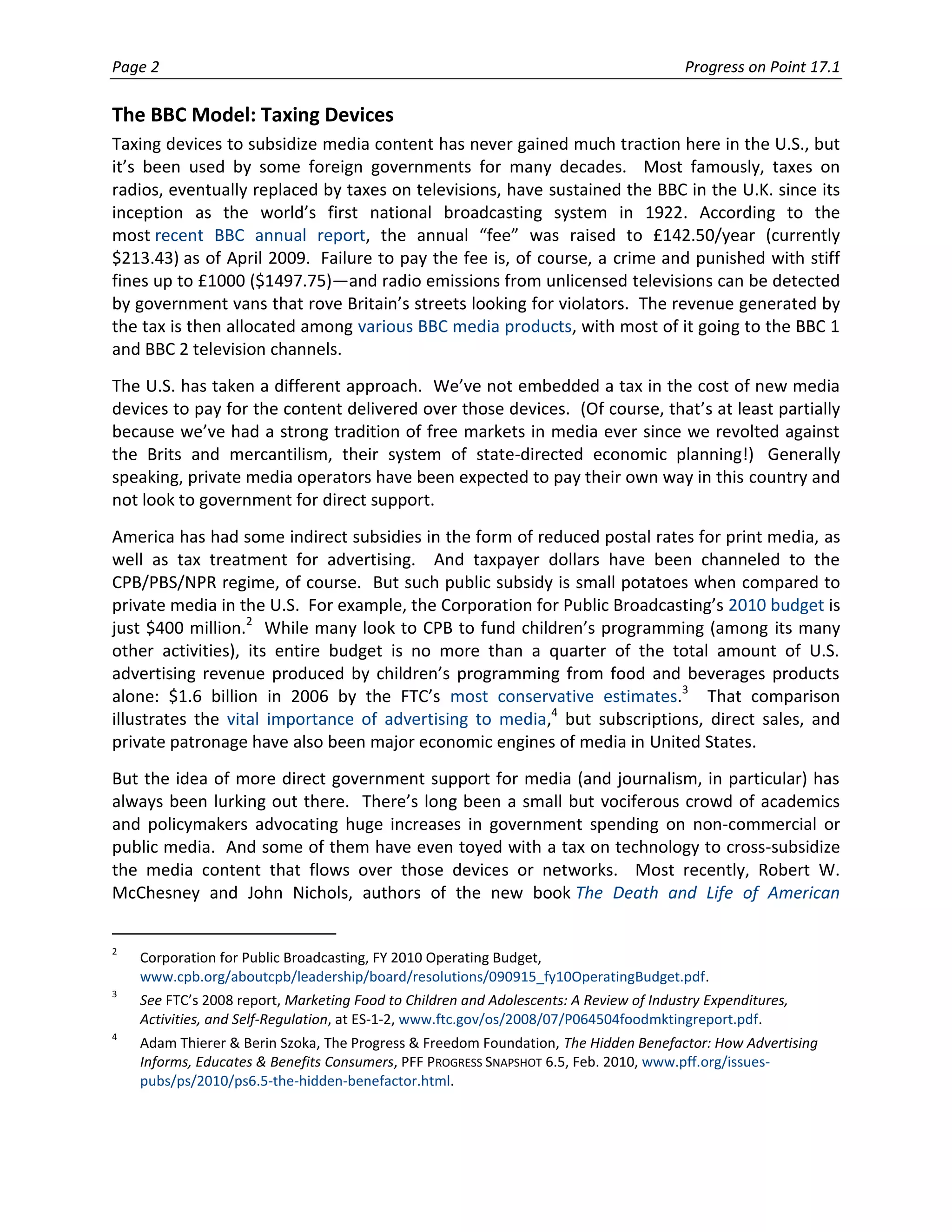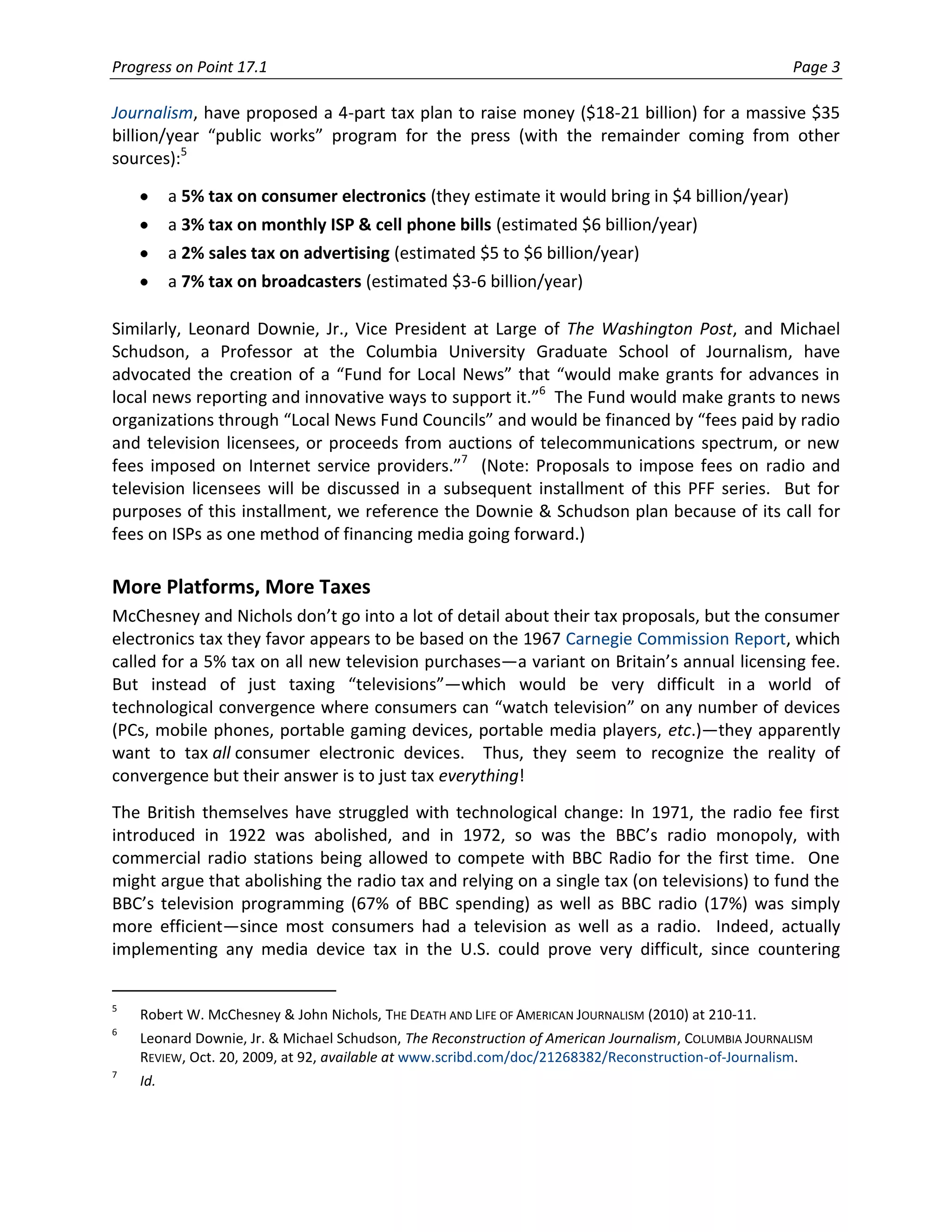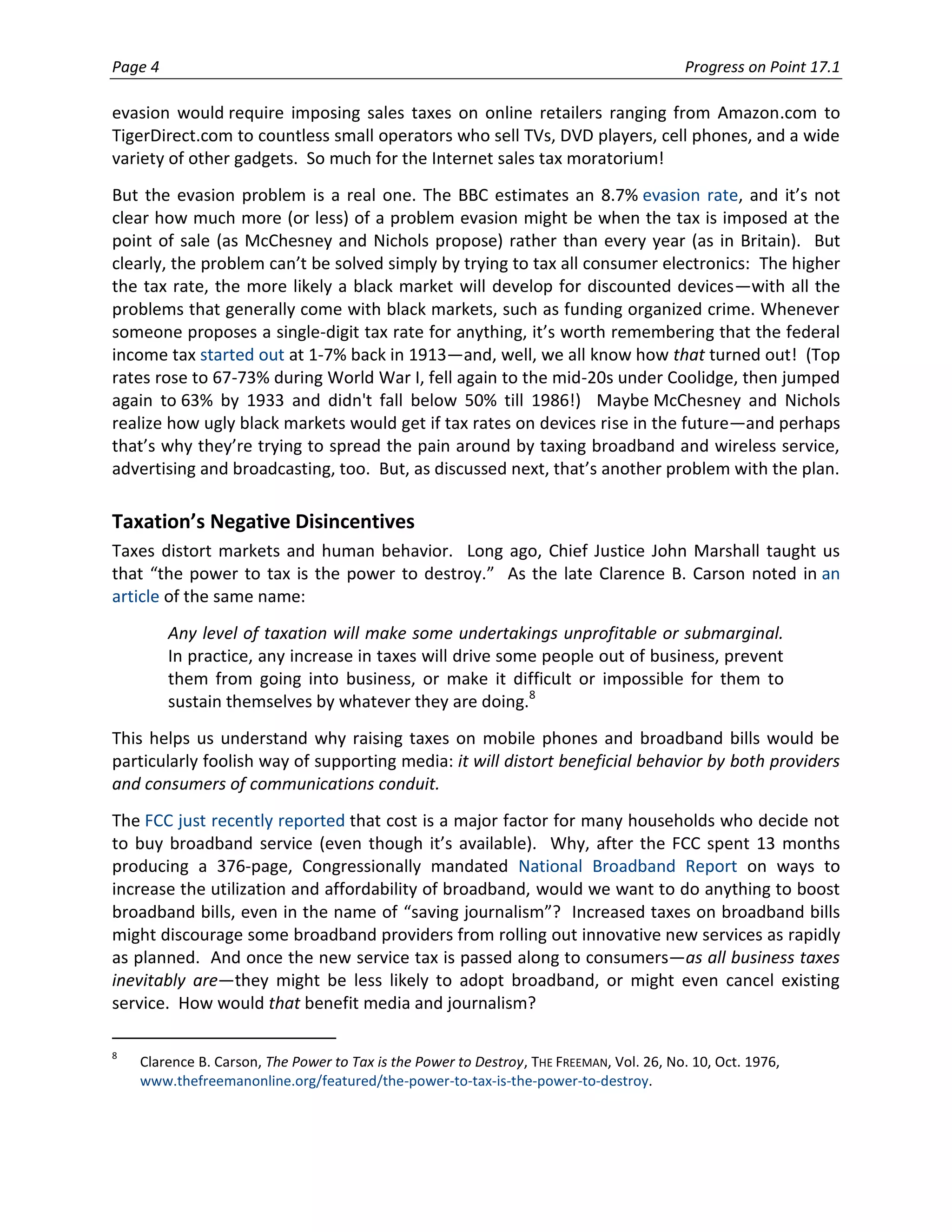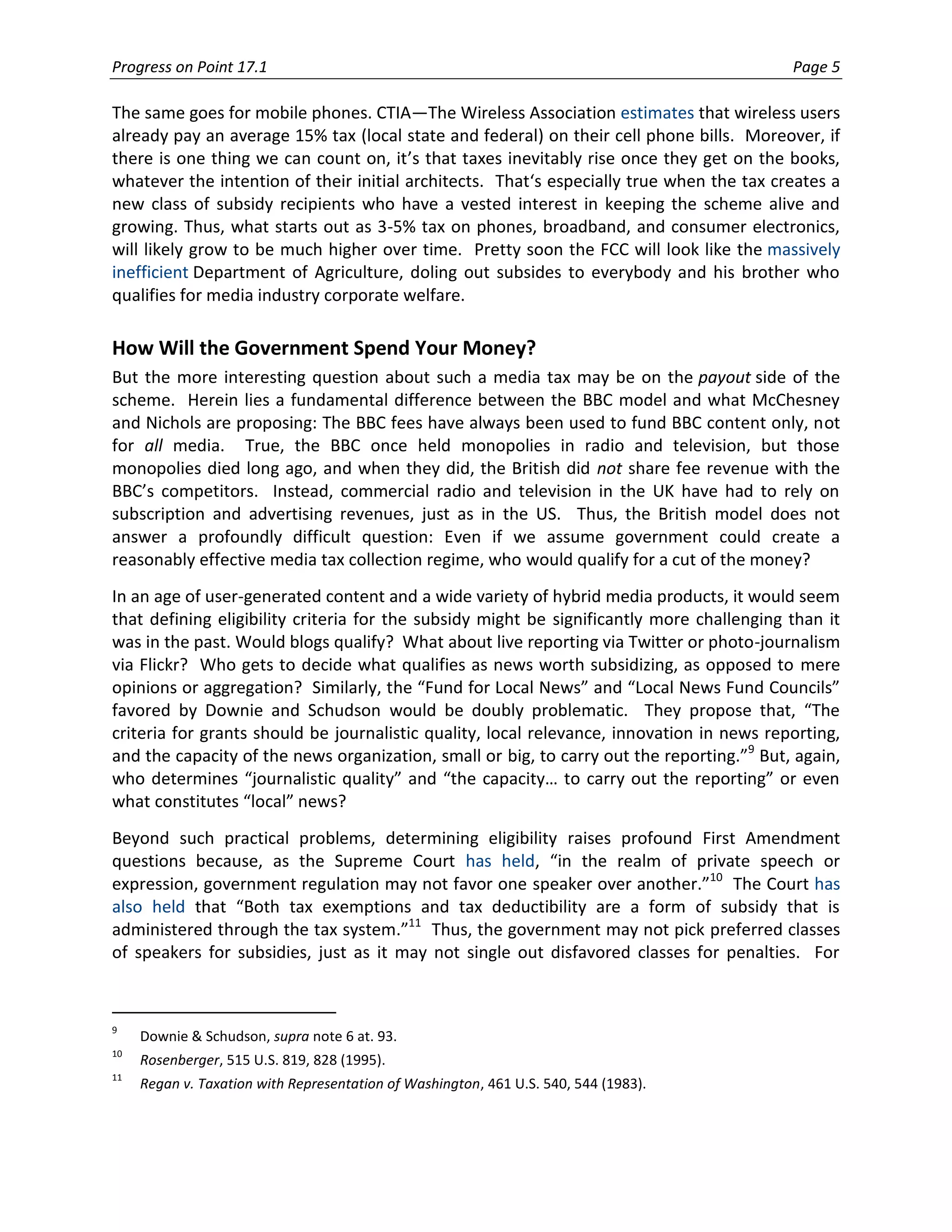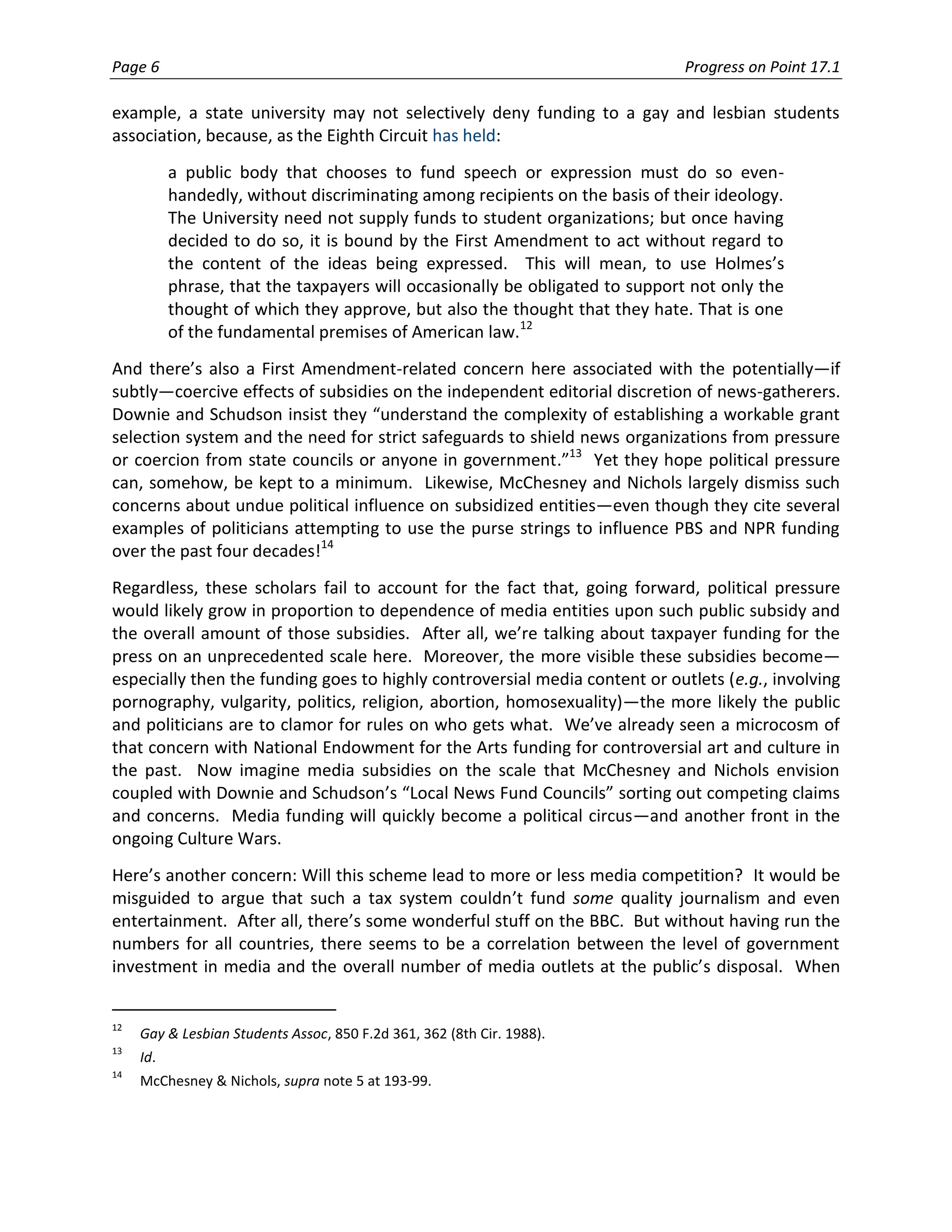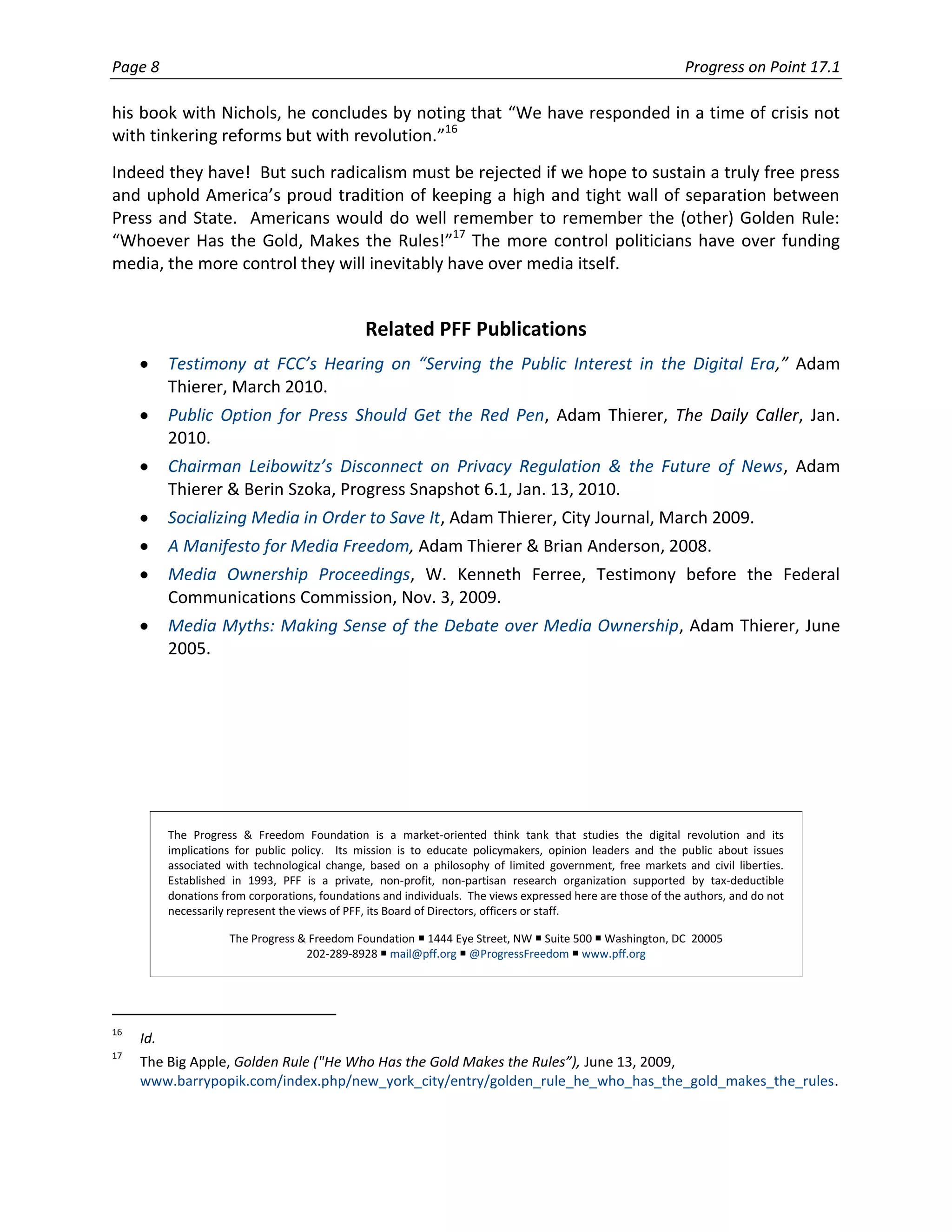This document discusses proposals to tax consumer electronics, mobile phones, broadband internet access, and advertising in order to generate funding to support struggling media organizations and journalism. Specifically, it outlines a 4-part tax plan proposed by Robert McChesney and John Nichols to raise $18-21 billion annually for media through taxes on consumer electronics (5%), monthly internet and cell phone bills (3%), advertising (2%), and broadcasters (7%). The document argues that such media taxes are inconsistent with American traditions of free markets and the First Amendment and could have negative unintended consequences.

